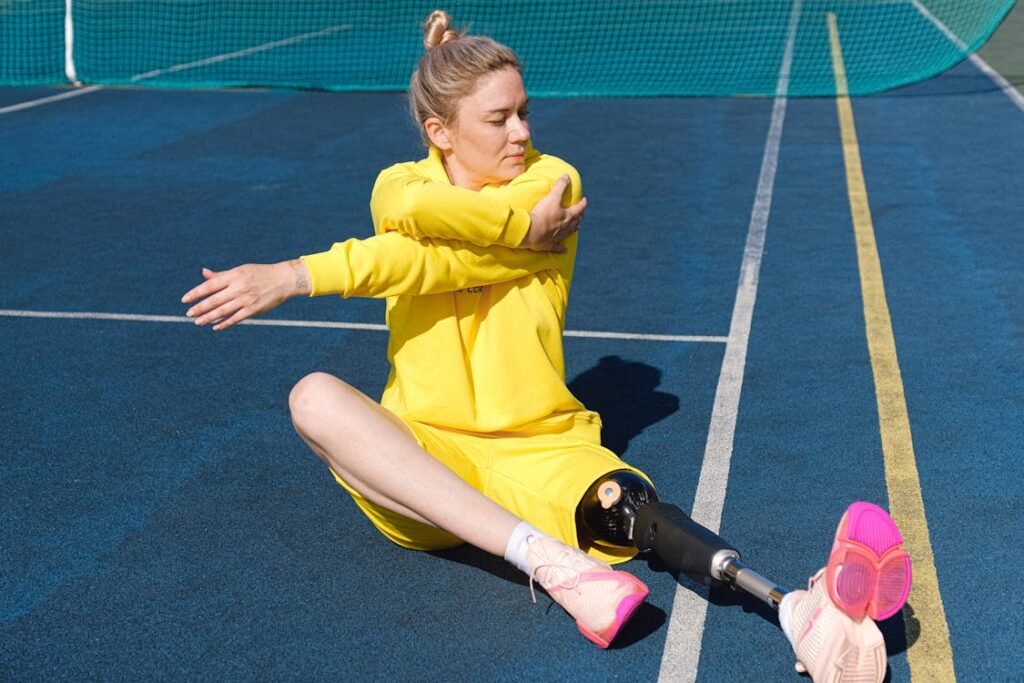Losing part of the foot can make walking, standing, and even simple movements more difficult. The foot plays a crucial role in balance and weight distribution, and when part of it is missing, it changes the way a person moves. This can lead to discomfort, strain on other parts of the body, and long-term mobility issues.
Prosthetic solutions for partial foot amputations have advanced significantly in 2024. New designs focus on improving comfort, restoring natural movement, and preventing complications like joint pain or skin irritation. The right prosthetic helps users regain confidence and live an active lifestyle without constant discomfort or instability.
Choosing the best prosthetic depends on the level of amputation, daily activities, and personal comfort preferences. From silicone foot restorations to high-tech carbon fiber designs, prosthetics today offer a range of solutions that mimic the function and appearance of a natural foot.
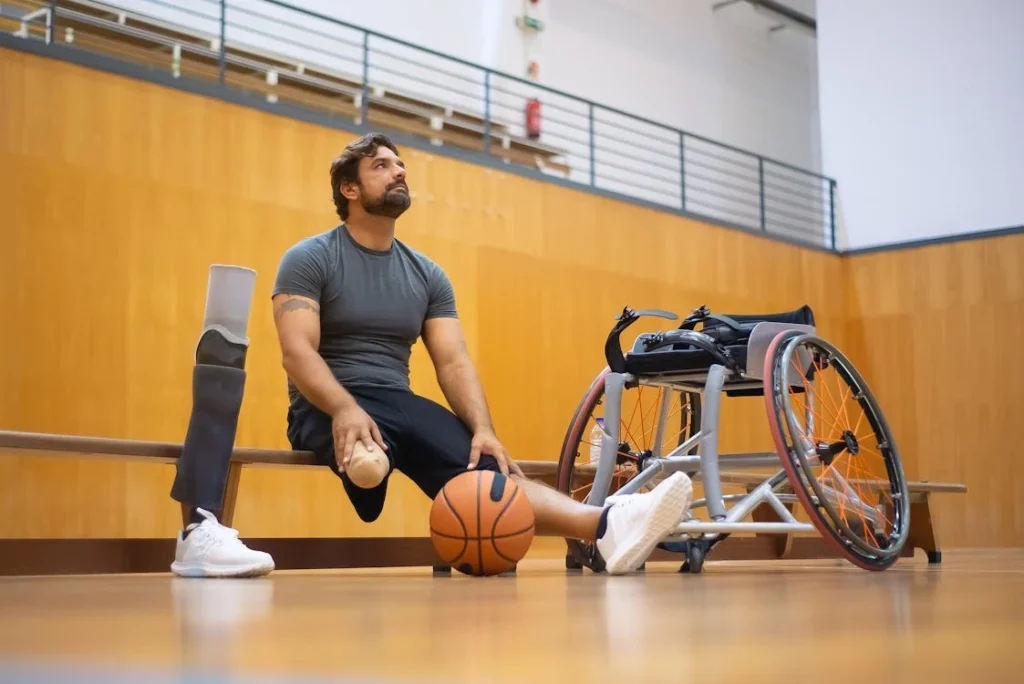
Understanding Partial Foot Amputations and Prosthetic Needs
A partial foot amputation can range from the loss of a single toe to the removal of the forefoot or midfoot. Each type of amputation affects movement in different ways, and the right prosthetic solution must address the specific challenges of each case.
The primary goal of a partial foot prosthetic is to restore stability, protect the remaining foot, and enable a smooth, natural walking motion.
How a Partial Foot Amputation Affects Mobility
The foot is responsible for absorbing shock, pushing off the ground while walking, and keeping the body balanced. When part of the foot is missing, these functions are disrupted.
This can lead to changes in walking patterns, which may cause discomfort in the ankle, knee, hip, or lower back.
For individuals with a toe amputation, balance may become slightly unstable, but they can often adjust without significant mobility issues. However, when a larger portion of the foot is missing, the body struggles to distribute weight properly.
Without the natural push-off motion of the toes and forefoot, walking can feel unnatural, requiring extra effort from the muscles and joints. Over time, this strain can lead to joint pain, muscle fatigue, and posture issues.
A well-designed prosthetic helps restore proper movement by redistributing weight evenly and providing support where it is needed most. By preventing excessive pressure on certain areas of the foot, prosthetics also help reduce the risk of skin breakdown and complications like sores or ulcers.
The Importance of Choosing the Right Prosthetic
Not all prosthetics are the same, and selecting the right one is essential for long-term comfort and mobility. A poorly fitted or inappropriate prosthetic can cause more harm than good, leading to pain, instability, and limited movement.
The level of amputation determines the type of prosthetic required. For toe amputations, a simple silicone restoration may be enough to fill the missing space and improve balance.
For more extensive amputations involving the forefoot or midfoot, a prosthetic that extends up to the ankle may be necessary to provide additional support. Some designs even include reinforced soles or built-in arch support to help restore the foot’s natural function.
Material choice also plays a role in comfort and durability. Silicone prosthetics offer a realistic appearance and flexibility, while carbon fiber models provide better energy return and shock absorption.
The ideal prosthetic should feel natural, allow for smooth movement, and fit comfortably within regular footwear.
Since every foot is unique, a custom-fit prosthetic is always the best option. Modern prosthetic technology, including 3D scanning and printing, allows for precise fittings that ensure the prosthetic functions as an extension of the user’s body.
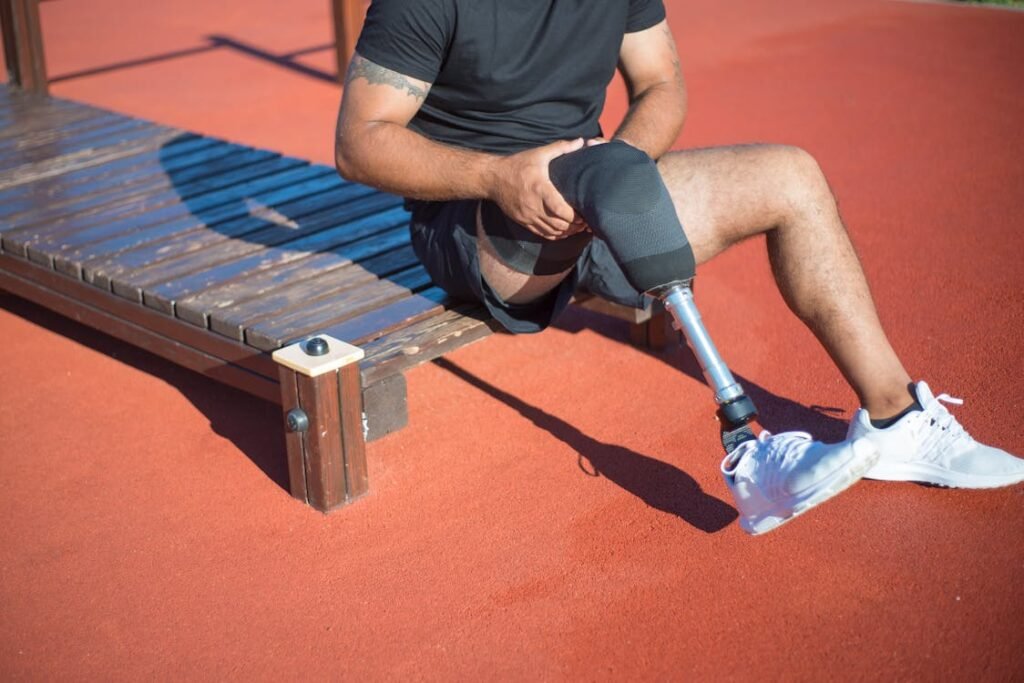
The Best Prosthetic Solutions for Partial Foot Amputations in 2024
The advancements in prosthetic technology have made partial foot prosthetics more functional, comfortable, and adaptable than ever before. Today’s designs are focused on restoring natural movement, reducing strain on the body, and providing users with long-term comfort.
The right prosthetic solution depends on the type of amputation, activity level, and individual needs.
Silicone-Based Prosthetics for Toe and Forefoot Amputations
Silicone prosthetics are an excellent choice for individuals who have lost one or more toes or part of the forefoot. These prosthetics are designed to blend seamlessly with the remaining foot, restoring both function and appearance.
The flexibility of silicone allows for natural foot movement, making walking smoother and reducing pressure on surrounding joints.
One of the biggest advantages of silicone-based prosthetics is their customizability. Prosthetists can match the color and texture to the user’s skin, making the prosthesis almost unnoticeable.
This is particularly beneficial for individuals who prefer a prosthetic that looks natural while still providing support.
For users who need additional stability, some silicone prosthetics come with reinforced soles that help distribute pressure evenly across the foot. This prevents excessive strain on the heel and remaining foot structures, reducing the risk of discomfort and long-term complications.
Carbon Fiber and Energy-Storing Prosthetics for Active Users
For individuals who lead an active lifestyle, carbon fiber prosthetics offer a high-performance solution. These prosthetics are designed to be lightweight yet strong, allowing users to walk, run, and engage in physical activities with greater ease.
The energy-storing properties of carbon fiber enable a responsive push-off, mimicking the function of the missing foot segment.
Unlike traditional prosthetics that remain rigid, carbon fiber models absorb impact and return energy with each step. This helps reduce fatigue and improves overall walking efficiency.
Athletes and individuals who spend long hours on their feet benefit from this technology, as it minimizes stress on the joints and muscles.
Many carbon fiber prosthetics are designed to fit inside standard footwear, making them practical for everyday use. Some models also feature adjustable cushioning and shock absorption to enhance comfort, especially for users who frequently walk on hard surfaces.
Custom-Fitted Prosthetic Insoles and Foot Orthoses
For individuals who have undergone a partial foot amputation but still retain a portion of their natural foot structure, custom-fitted insoles and foot orthoses can be a practical solution.
These devices help restore balance by providing additional arch support and redistributing pressure more evenly across the foot.
Custom orthoses are particularly useful for individuals with Lisfranc or Chopart amputations, where part of the midfoot is missing. Without proper support, the remaining foot structures can become overloaded, leading to pain and deformities.
By providing a stable base, these prosthetics reduce strain and allow for a more natural walking pattern.
Modern 3D scanning and printing technology have made it possible to create highly personalized insoles that match the exact shape of the user’s foot. These prosthetics fit comfortably inside shoes, offering both support and discretion.
Ankle-Supporting Prosthetics for Maximum Stability
For individuals who have lost a significant portion of the foot and require additional support, ankle-supporting prosthetics are an ideal choice. These prosthetics extend above the ankle, helping users maintain better stability while walking.
Ankle-supporting designs are especially beneficial for individuals who experience difficulty with balance due to the loss of their forefoot. By providing extra structural support, these prosthetics reduce the risk of falls and make walking more efficient.
Some advanced models even incorporate adjustable joints that allow for greater flexibility, making movement more natural and comfortable.
Waterproof and High-Durability Prosthetics for Everyday Use
For individuals who require a prosthetic that can withstand exposure to water, sand, and other challenging environments, waterproof prosthetics are an excellent option. These prosthetics are made from durable, non-corrosive materials that allow users to participate in activities such as swimming, hiking, and beach outings without worry.
High-durability prosthetics are also useful for individuals who work in demanding conditions, such as construction or outdoor labor. These prosthetics are built to handle heavy use while maintaining comfort and functionality.
Their reinforced design ensures long-lasting performance without the need for frequent replacements.
Choosing the Right Prosthetic for Your Needs
Finding the right prosthetic solution for a partial foot amputation is a highly personal decision. The best choice depends on the level of amputation, daily activities, and comfort preferences.
With so many advanced options available in 2024, it is important to understand how different prosthetics function and which features will offer the best experience for long-term use.
Assessing Your Activity Level
One of the biggest factors in choosing a prosthetic is determining how active you are. If you lead a highly active lifestyle, engaging in sports, running, or long-distance walking, a carbon fiber or energy-returning prosthetic is the best option.
These models provide flexibility, durability, and efficient movement, reducing strain on the body.
For individuals who spend most of their time walking or standing but do not engage in high-impact activities, a silicone-based or reinforced insole prosthetic may be ideal.
These provide the necessary balance and comfort while fitting easily inside regular shoes. Some users prefer ankle-supporting prosthetics for extra stability, especially if their amputation extends into the midfoot.
Comfort and Fit Matter Most
No matter how advanced a prosthetic is, it must be comfortable. A poorly fitted prosthetic can cause blisters, pressure sores, and muscle strain. Custom-fit designs ensure that the prosthetic conforms to the unique shape of the foot, preventing irritation and discomfort.
Modern prosthetic fittings use 3D scanning technology to create precise models of the foot, allowing prosthetists to design a device that fits perfectly. Some users may need to make slight adjustments over time as their foot changes in shape or sensitivity, so regular follow-ups with a prosthetist are recommended.
For individuals with sensitive skin, breathable liners and moisture-wicking materials can help reduce sweating and friction. Ensuring the prosthetic is easy to wear throughout the day makes a significant difference in overall comfort.
Considering Footwear Compatibility
Many prosthetic users want to continue wearing their preferred footwear without restrictions. Some prosthetics are designed to fit seamlessly inside standard shoes, while others may require custom footwear for the best support.
Silicone toe prosthetics and partial foot fillers are designed to work with most types of footwear, allowing users to walk naturally without any visible difference. Carbon fiber and reinforced foot orthoses may require shoes with extra depth to accommodate the additional structure.
Users who need ankle-supporting prosthetics may find that supportive footwear improves their mobility. Shoes with firm soles, good arch support, and shock absorption enhance comfort and reduce strain on the body.
Discussing footwear options with a prosthetist can help ensure the best combination of prosthetic support and everyday comfort.
The Role of Rehabilitation in Prosthetic Success
Adjusting to a prosthetic is not just about choosing the right device—it is about learning how to walk confidently again. After a partial foot amputation, gait patterns change, and the body needs time to adapt to the new way of moving.
Physical therapy plays a crucial role in helping users regain stability, improve strength, and build confidence in their prosthetic. Therapists guide users through exercises that strengthen the remaining foot muscles, improve balance, and prevent compensation habits that could lead to joint pain or posture issues.
For those using energy-returning prosthetics, rehabilitation helps them learn how to take advantage of the prosthetic’s design for smoother walking and reduced fatigue. Users who require ankle-supporting prosthetics benefit from balance training to ensure they feel stable on different surfaces.
At Robobionics, we emphasize the importance of rehabilitation alongside prosthetic solutions. Our experts work closely with users to ensure they receive proper training and support for a seamless transition.
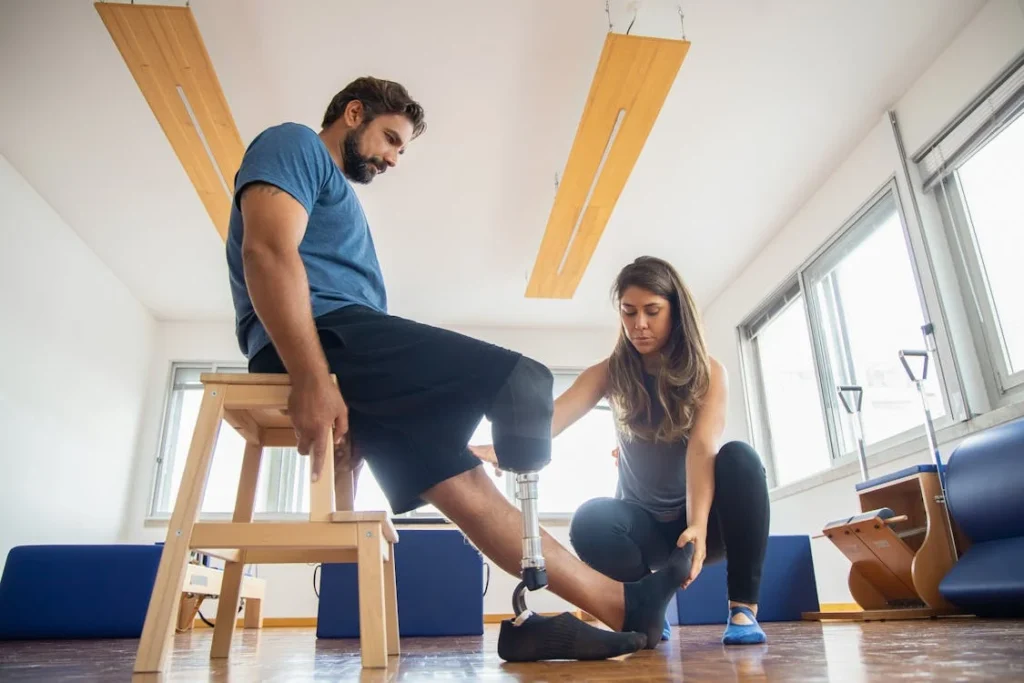
Maintaining Your Partial Foot Prosthetic for Long-Term Use
A prosthetic is an investment in mobility, and proper care ensures it remains functional, comfortable, and durable for years. While modern prosthetics are designed for everyday wear, they still require routine maintenance to prevent discomfort, skin irritation, and wear-and-tear.
Taking the time to care for your prosthetic properly can make a significant difference in how well it performs and how comfortable it feels.
Daily Cleaning and Hygiene
Keeping a prosthetic clean is essential for both comfort and hygiene. Since partial foot prosthetics come into direct contact with the skin, they can trap sweat and bacteria, leading to skin irritation if not cleaned regularly.
For silicone prosthetics, washing them with mild soap and warm water each day helps maintain cleanliness. If the prosthetic has a removable liner, it should be cleaned separately and allowed to dry completely before wearing.
Using antibacterial wipes can also help keep the prosthetic fresh throughout the day, especially in warm or humid conditions.
For carbon fiber and energy-returning prosthetics, dust and dirt can accumulate on the surface, particularly if used in outdoor environments. Wiping them down with a damp cloth ensures they remain in good condition.
Avoid using harsh chemicals, as they can weaken the material over time.
Monitoring Fit and Comfort Over Time
The shape of the residual foot can change due to weight fluctuations, muscle development, or swelling. Even small changes in foot size can affect how the prosthetic fits. If the prosthetic starts to feel loose or causes discomfort, it may need adjustments.
Regular visits to a prosthetist help ensure the prosthetic continues to fit properly. Adjustments can be made to improve alignment, cushioning, and pressure distribution.
If a prosthetic becomes too tight, it can cause circulation problems, while a loose fit may lead to instability and discomfort while walking.
For users with customized insoles or foot orthoses, checking the condition of the padding and support structures is essential. Over time, cushioning materials can compress, reducing their effectiveness.
Replacing worn-out components helps maintain proper foot support and comfort.
Preventing Wear and Tear
Partial foot prosthetics are designed for long-term use, but they can wear down with frequent use. Checking for cracks, thinning material, or loose components helps identify problems early before they affect mobility.
For individuals with high-impact prosthetics, such as carbon fiber footplates, monitoring for signs of material fatigue is important. If the prosthetic starts to feel less responsive or shows visible signs of stress, it may need replacement.
Ankle-supporting prosthetics and those with reinforced soles should be inspected for any signs of loosening or misalignment. Any issues with the structural integrity of the prosthetic should be addressed by a professional as soon as possible to prevent injury.
Adapting to Different Seasons and Environments
Environmental factors can affect how a prosthetic feels and functions. In cold weather, some materials may stiffen slightly, while excessive heat and humidity can cause sweating, leading to skin irritation.
Wearing moisture-wicking socks can help keep the foot dry and comfortable.
For users who engage in outdoor activities, waterproof prosthetics offer added durability and protection. These prosthetics are designed to resist damage from moisture, sand, and dust, making them ideal for hiking, swimming, or working in demanding environments.
If traveling, carrying extra prosthetic supplies, such as liners or cushioning pads, can help manage any discomfort that may arise from extended use.
When to Seek Professional Adjustments or Replacements
Even with regular maintenance, there will be times when a prosthetic needs professional servicing or replacement. If a prosthetic starts causing pain, limits mobility, or feels significantly different from when it was first fitted, it’s time to consult a prosthetist.
Common signs that a prosthetic may need attention include increased pressure points, difficulty walking, or visible damage. A prosthetist can assess whether minor adjustments can fix the issue or if a new prosthetic is needed.
At Robobionics, we provide ongoing support to ensure users receive timely maintenance, adjustments, and replacements. Our goal is to ensure every prosthetic functions optimally, allowing users to focus on their daily activities without discomfort or limitations.
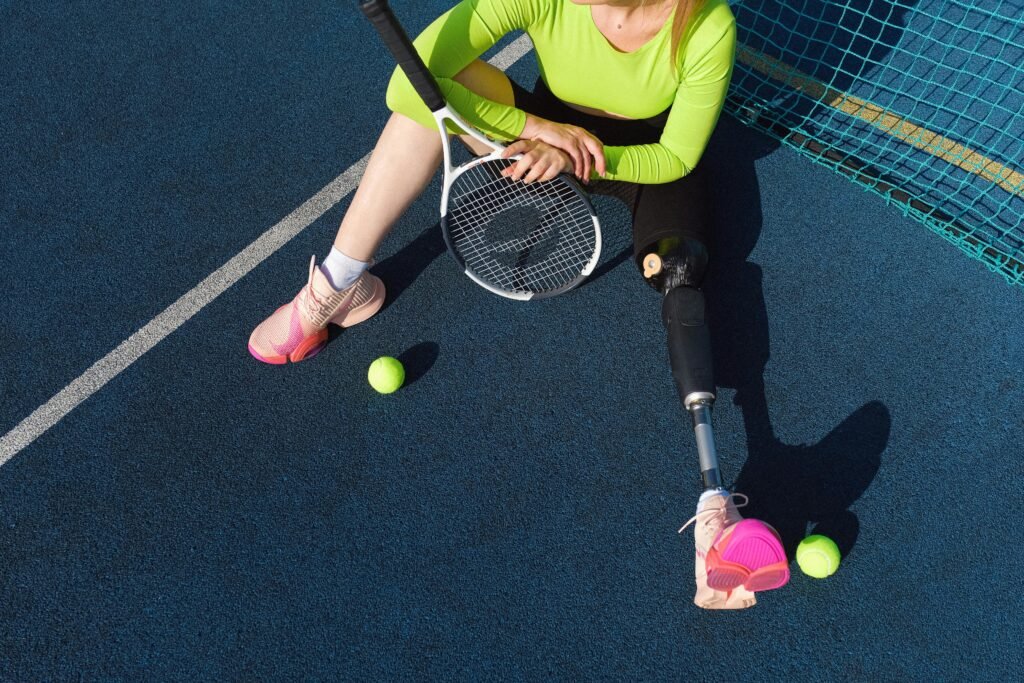
The Psychological and Emotional Impact of Using a Partial Foot Prosthetic
Adjusting to life with a partial foot prosthetic is not just a physical process—it is also an emotional journey. Losing a part of the foot can bring feelings of frustration, uncertainty, or self-consciousness.
While a prosthetic restores function and mobility, users often go through a period of adaptation as they regain confidence in their movements and adjust to their new reality. Understanding the emotional aspects of this transition can help individuals approach their prosthetic journey with a positive mindset.
Overcoming Self-Consciousness and Body Image Concerns
Many people worry about how others will perceive them when they start using a prosthetic. Even though partial foot prosthetics are often designed to fit inside a shoe and remain discreet, the user may still feel self-conscious about their appearance or walking pattern.
It is natural to be concerned about how friends, family, or colleagues will react, but over time, most users find that these worries fade as they become more comfortable with their prosthetic.
One of the best ways to overcome self-consciousness is to focus on the benefits of the prosthetic rather than the loss it represents. Instead of seeing it as a reminder of an amputation, it helps to view the prosthetic as a tool that restores mobility and independence.
Speaking openly with supportive friends and family can also ease concerns and create a more comfortable environment for adjustment.
For individuals who prefer a cosmetic solution, many prosthetics are designed with realistic skin tones and textures, blending naturally with the remaining foot. This helps users feel more at ease in social situations while still benefiting from the support and stability the prosthetic provides.
Regaining Confidence in Movement
One of the biggest psychological challenges after a partial foot amputation is learning to trust movement again. Users often feel hesitant when walking, afraid of tripping, losing balance, or experiencing discomfort.
This lack of confidence can lead to reduced mobility, as individuals may unconsciously avoid activities they once enjoyed.
Regaining trust in the prosthetic takes time and practice. The more a user engages in walking exercises, balance training, and daily activities, the more natural their movements become.
Working with a physical therapist or prosthetist can help build confidence by providing expert guidance on improving gait and posture.
Setting small goals can also be helpful. Achievements like walking comfortably around the house, standing for longer periods, or navigating stairs with ease can provide a sense of accomplishment.
Each milestone reinforces confidence and reminds users that they are in control of their mobility.
Navigating Social Situations with a Prosthetic
Returning to social environments with a prosthetic can feel overwhelming at first. Some people may ask questions out of curiosity, while others may not notice the prosthetic at all.
Users have different approaches to handling social interactions—some choose to openly discuss their prosthetic, while others prefer to keep the focus on other topics. There is no right or wrong approach; what matters is that the individual feels comfortable in their own skin.
For those concerned about reactions in professional or social settings, preparing simple responses can ease interactions. If someone asks about the prosthetic, a response like, “It helps me walk more comfortably,” or “It’s just part of my routine now,” can shift the conversation naturally.
With time, most users find that people pay less attention to the prosthetic than they expected.
The Importance of Mental and Emotional Support
Adjusting to a prosthetic can bring moments of frustration, particularly in the early stages. Some days, movement may feel easy and natural, while other days, discomfort or fatigue may make simple tasks more challenging.
This emotional rollercoaster is completely normal.
Having a strong support system makes a big difference. Connecting with others who have experienced partial foot amputations can provide reassurance and motivation.
Many users find comfort in sharing their journey with support groups, online forums, or peer mentorship programs.
For individuals struggling with deeper emotional challenges, speaking to a counselor or therapist can be beneficial. Mental health is just as important as physical well-being, and addressing any concerns early on can lead to a smoother adjustment.
Embracing a New Normal
A partial foot prosthetic does not define a person’s abilities—it enhances them. While the transition period may be challenging, most users find that with time, patience, and the right prosthetic solution, they regain their independence and confidence.
The key is to approach the journey with a positive mindset, take advantage of available support, and recognize that adaptation is a process.
At Robobionics, we believe that prosthetics are more than just functional tools—they are a pathway to renewed mobility and self-assurance.
Our goal is to provide users with prosthetic solutions that not only restore movement but also empower them to live life to the fullest.
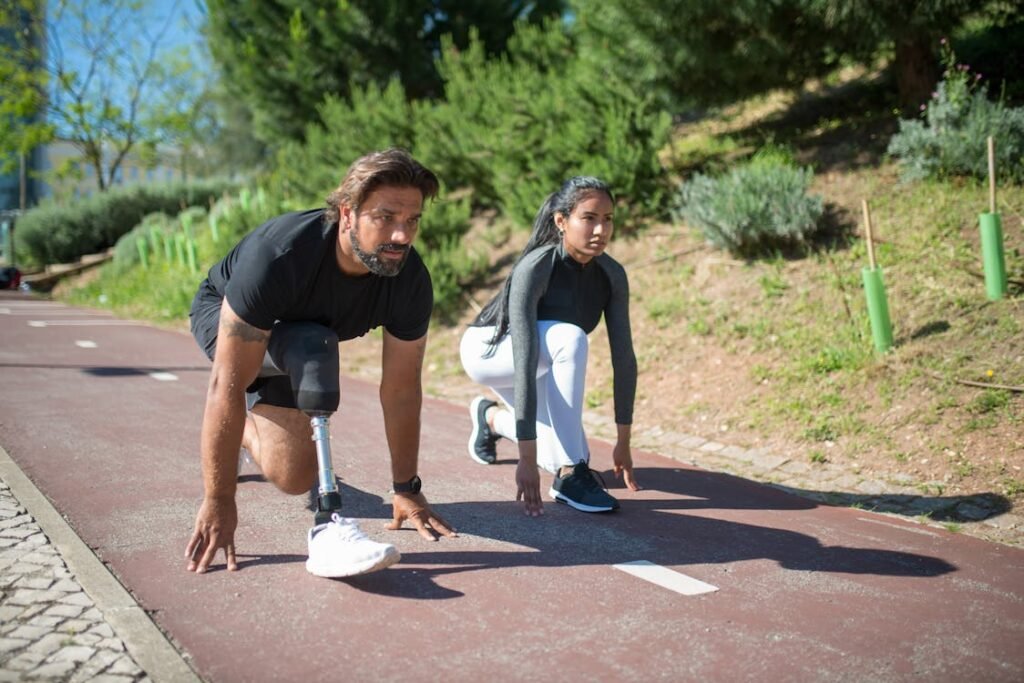
The Future of Partial Foot Prosthetics: Emerging Trends and Innovations
Prosthetic technology is advancing rapidly, and the future of partial foot prosthetics looks more promising than ever. The goal is to make prosthetics more comfortable, functional, and adaptable to different lifestyles.
New materials, smart technology, and 3D printing are changing the way prosthetics are designed, offering users better mobility and a more natural walking experience.
Advancements in Lightweight and High-Performance Materials
Traditional prosthetics were often heavy and rigid, making movement feel unnatural. Today, researchers are developing ultra-lightweight materials that offer both durability and flexibility.
Carbon fiber, graphene, and advanced polymers are now being used to create prosthetics that are strong enough to handle daily wear while remaining light enough to reduce strain on the body.
These new materials also improve energy return, meaning the prosthetic absorbs impact and provides better push-off during walking. This helps users move more efficiently, reducing fatigue and making long-distance walking more comfortable.
As materials continue to improve, future prosthetics will become even lighter and more responsive to natural movement.
The Role of Smart Prosthetics and Artificial Intelligence
One of the most exciting developments in prosthetic technology is the integration of smart systems and artificial intelligence. Smart prosthetics use built-in sensors to analyze a user’s movement in real time, adjusting for balance, pressure, and terrain changes.
This means that instead of relying solely on the user’s control, the prosthetic can actively assist with walking, making movement smoother and more intuitive.
Some of the latest prosthetic designs include microprocessor-controlled footplates that automatically adjust stiffness based on walking speed. For example, when a user walks slowly, the prosthetic provides extra stability, and when they speed up, the system adapts to allow for more flexibility.
These innovations are particularly useful for individuals who frequently transition between different environments, such as walking on flat ground, slopes, or stairs.
3D Printing for Customization and Accessibility
3D printing technology is revolutionizing the way prosthetics are designed and manufactured. In the past, custom prosthetics were expensive and required long production times.
With 3D printing, prosthetists can now create highly personalized prosthetic solutions in a matter of days, significantly reducing costs and wait times.
This technology allows for precise customization based on a digital scan of the user’s foot, ensuring a perfect fit. It also makes it easier to produce replacement parts, so if a prosthetic component wears out, it can be reprinted without replacing the entire device.
As 3D printing becomes more advanced, prosthetic users can expect even more affordable and high-quality options.
Bionic Prosthetics and Sensory Feedback
Another emerging area of research is bionic prosthetics that provide sensory feedback. Currently, most prosthetics function purely as mechanical replacements, but future designs aim to restore some level of feeling.
Scientists are developing prosthetics with embedded sensors that detect pressure, temperature, and texture, sending signals back to the nervous system.
This would allow users to “feel” the ground beneath them, improving balance and coordination. Sensory feedback would also enhance safety by alerting users to uneven surfaces, reducing the risk of falls.
While these prosthetics are still in the experimental stage, they represent the future of prosthetic innovation and could dramatically change the user experience.
Sustainable and Eco-Friendly Prosthetic Solutions
Sustainability is becoming an important focus in prosthetic manufacturing. Many prosthetics today are made from plastic-based materials that are difficult to recycle.
However, researchers are exploring biodegradable and recyclable alternatives that reduce environmental impact while maintaining durability.
Some companies are experimenting with plant-based composites and bioengineered materials that provide the same strength as traditional prosthetics without contributing to plastic waste.
As awareness of sustainability grows, more eco-friendly prosthetic options will likely become available.
What the Future Holds for Partial Foot Prosthetic Users
The future of partial foot prosthetics is filled with exciting possibilities. With continuous advancements in materials, smart technology, and customization, prosthetic solutions are becoming more efficient, comfortable, and accessible.
These innovations will help users regain even greater levels of mobility and independence, making prosthetics feel more like a natural extension of the body.
At Robobionics, we are dedicated to staying at the forefront of these developments. Our mission is to provide prosthetic users with the latest, most advanced solutions available, ensuring they receive the best possible experience.
As technology evolves, we will continue to bring new innovations that improve quality of life and redefine what is possible with prosthetics.
Conclusion
Choosing the right prosthetic solution for a partial foot amputation is essential for restoring mobility, comfort, and confidence. Thanks to advancements in prosthetic technology, users now have access to highly functional, lightweight, and customizable options that improve stability and reduce strain on the body. Whether it’s silicone-based prosthetics for everyday comfort, carbon fiber designs for active users, or 3D-printed custom solutions, 2024 offers more choices than ever before.
Beyond selecting the right prosthetic, long-term success depends on proper rehabilitation, maintenance, and emotional adaptation. Building confidence in movement, maintaining a comfortable fit, and staying physically active all contribute to a smoother transition. As smart prosthetics, sensory feedback systems, and sustainable materials continue to evolve, the future holds even greater possibilities for enhanced mobility.
At Robobionics, we are committed to providing state-of-the-art prosthetic solutions that empower users to lead independent and fulfilling lives. If you are exploring prosthetic options or looking for expert guidance, contact us today to find the best solution for your needs. Let’s take the next step together toward restoring balance and mobility.



